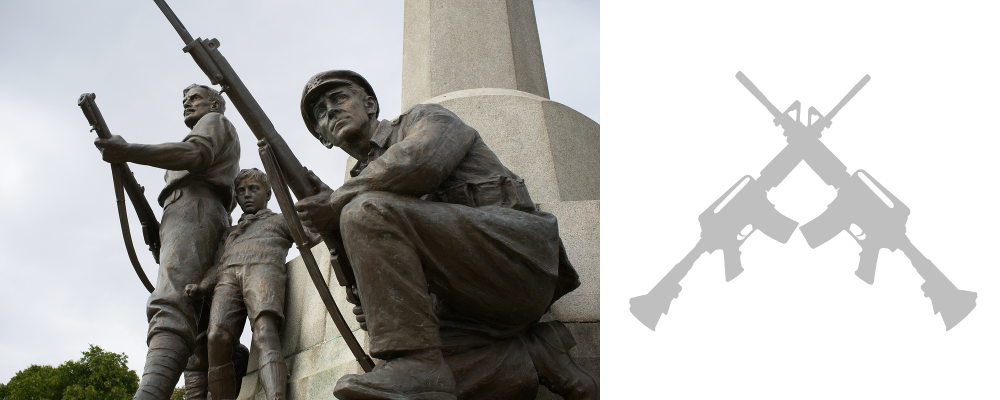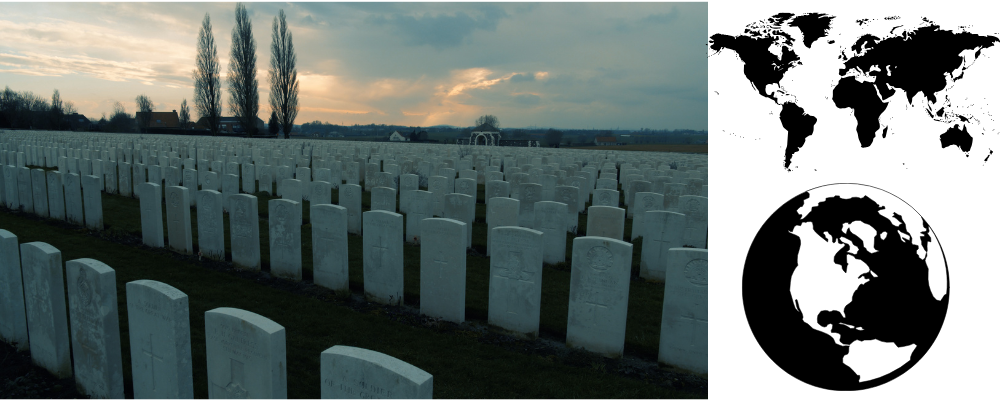Introduction to World War 1: Causes and Context
World War 1, the Great War was one of the largest conflicts in human history, with vast number of deaths. It ran from 1914 to 1918 and featured all across the major powers of the world. A web, of the competition for colonies and economic power, militarism imperialism and nationalism was the nexus that war was precipitated. The assassination of Archduke Franz Ferdinand of Austria-Hungary is usually presented as the proximate cause, however the underlying contestation amongst the powers went decades. In this culture War 1 was a long-term rivalry, intersecting alliances and politics.

Outbreak of World War 1: How It All Began
World War 1 began on June 28 th, 1914 with the assassination of Archduke Franz Ferdinand in Sarajevo. Austria-Hungary declared war on Serbia with the back up of Germany. So this got pushed rapidly as Russia — Serbia’s ally — began to mobilize. Germany declared war on Russia, France who was allied with Russia declared war on Germany. but when Germany went to attack Belgium to get at France, the United Kingdom came into the war. Within weeks Europe was at war, the conflict soon transcended European frontiers and included colonies and major powers setting the world stage for a global conflict.
Major Players of World War 1: Allies vs. Central Powers
There were two major alliances that clashed during World War 1: the Peace and the Alliance of the Central Powers. The Allies were France, the UK and Russia (until 1917) then Italy (1915), Japan and latter United State. The Central Powers (Mainly:Germany, Austria-Hungary and Turkey( Ottoman Empire) and Bulgaria) These systems developed over the course of decades as a result of common vested interests and a long history of suspicion among rival states. The change of alliances, and the entry to the war as an ally in 1917 resulted in the finally tilting of balance of power.

Trench Warfare: Life on Front Lines
A trench is where we all know the cliched picture of WW1 soldiers in muddy, disease ridden trenches entrenched forever on posters. trench warfare being the overwhelming norm of the Western front with its hard circumstances. The trenches were often underwater, riddled with lice and rats ruled the area. New recruits faced constant shelling, sniper fire and gas attack soldiers. The inhumanity of it all and the ubiquitous boredom of trench life meant casualties for psychological breakdown, killing many a soldier of what was still termed shell shock but which we know now — of course- as PTSD.
Key Battles of World War 1: From the Somme to Verdun
There were many important battles of World War 1, but there were a few that are key. The Battle of the Somme (1916) — won infamy for its contemporaneous slaughter over a million men dead or wounded in the battle. The Battle of Verdun that same year would prove to be one of the longest and bloodiest battles in history. These battles, and many more like them — (like the Battles of Tannenberg and Gallipoli, to name a couple) — demonstrated the price of war and the bankruptcy of trench warfare, a sides for neither territory gained and enormous loss of life.
Technological Advancements in World War 1: How Warfare Changed
With new technologies, world war 1 transformed warfare as we know. Tanks first used, and planes & chemical weapons were science fiction that changed the face of warfare forever. The tank was not very reliable to begin with, but its effectiveness in breaking the stalemate of trench warfare is undeniable. Airplanes were employed on reconnaissance, dogfight and even bombing runs. Chemical warfare, which included mustard gas killed thousands of men on the battlefield in immediate and long-term suffering for soldiers. These were technologies which heralded the start of “true” modern warfare.

Role of Women During World War 1
The workforce, in particular was effected greatly by World War 1; a lot of modern changes. Women worked their way into positions that would have been reserved for men; millions of them went off to work while men were at war. They laboured in factories, were nurses on her majesty battlefield and filled jobs more generally. Many women joined the suffrage movements during the war resulting in several countries giving women the vote after hostilities ceased. The role of women in World War 1 was also crucial for the war effort and paved way for women’s liberation in later years.
World War 1 and Global Economy: Aftermath
World War 1 had disastrous economic consequences. Massive national debts were incurred by countries themselves involved in the war nations. The war wiped industries out, it disrupted trade and it caused widespread hunger and economic disaster. Europeans infrastructure destroyed and the financial nightmare then compounded led to Great Depression of early 1930s. The recovery of the general economy took years and decades after as well a large number of nations continued on an economic roller coaster ride.
Treaty of Versailles: How It Shaped the 20th Century
Treaty of Versailles (1919) officially ended World War 1 Once it was signed. Reckoning high reparations to Germany which many historians think was a major cause for Nazi and World War 2. The treaty remapped European borders, tearing apart empires and forging new countries. These were designed to prevent subsequent conflict, but led to ill feeling and economic depression in Germany. The Treaty of Versailles thus created the background of many of the political and social developments that would characterize the first decades of the twentieth century.

Impact of World War 1 on Modern Warfare
World War 1 really transformed how wars were fought. The introduction of tanks, airplanes, and chemical weapons marked the beginning of a new kind of combat. The insights gained from this conflict—like the significance of mobility, the use of combined arms tactics, and the promise of emerging technologies—would influence military strategies in wars to come. Plus, the massive mobilization of national resources during this time set the stage for total war approaches in later conflicts
The Psychological and Social Effects of World War 1
World War 1 had a huge impact on people’s minds. Many soldiers who made it back home dealt with what was called shell shock, now known as PTSD. The war took millions of lives, leaving families and communities deeply affected. Afterward, a lot of folks started questioning the purpose of war and turned towards peace movements. The war also changed society a lot, with women stepping into new roles and gaining more rights and freedoms.
World War 1 Heroes and Legends: Stories of Valor
World War 1 brought unimaginable suffering, yet it also gave rise to incredible acts of bravery. Soldiers such as Sergeant Alvin York from the United States and Corporal Adolf Loos from Germany became household names because of their courage. These heroes, alongside many others, showed exceptional guts in extreme situations receiving medals and turning into symbols of their countries’ determination. Their tales often highlighted in books and movies, remind us how tough the human spirit can be when faced with unthinkable hardship.

Role of Propaganda in World War 1
During World War 1, propaganda was everywhere. It helped keep people’s spirits up and encouraged them to join the fight. Governments used posters, movies, and newspapers to sway public opinion, make the war look heroic, and paint the enemy as the bad guys. This push for nationalism convinced many that the war was right and needed, even as the losses grew. The way propaganda was used back then influenced how it would be used in later wars.
World War 1 and Changing Political Landscape
World War 1 brought a lot of political change everywhere. It played a big part in the fall of old monarchies like the Russian, German, Austro-Hungarian, and Ottoman empires. From that chaos, new countries popped up, while some others struggled with instability. The Russian Revolution in 1917 led to communism taking hold, and afterward, we saw fascist and nationalist groups gaining ground, which set the stage for World War 2. This war really changed the political landscape in Europe and beyond.
Legacy of World War 1: Lessons Learned for Future Generations
World War 1 left behind a legacy of destruction and optimism. The conflict’s huge death toll and the havoc it wreaked showed how the world needed international diplomacy and peacekeeping efforts. After the war, nations formed the League of Nations to stop another worldwide fight. Even though the League didn’t manage to prevent World War 2, the lessons from World War 1 still shape global politics today. They remind us how crucial it is to work together, talk things out, and strive for peace.

Customer FAQs
Q.- What caused World War 1?
World War 1 happened because of a mix of political, economic, and social issues like nationalism, militarism, and rivalry among the big countries. The spark that set it off was the assassination of Archduke Franz Ferdinand.
Q.-How did World War 1 end?
World War 1 wrapped up when the Treaty of Versailles was signed in 1919. This treaty hit Germany hard with penalties and changed the borders in Europe.
Q.-How many people died in World War 1?
More than 16 million people died in World War 1, including soldiers and civilians.
Q.-What were the main weapons used in World War 1?
The war saw the introduction of tanks, airplanes, and chemical weapons like mustard gas, alongside traditional weapons such as rifles and artillery.
- What were the long-term effects of World War 1?
World War 1 led to political upheaval, economic hardship, and social changes. It set the stage for World War 2 and influenced the development of modern warfare.
Click on the link above for information about the Great Wall of China.
Click on the link above to know how a refrigerator works.

Good job
thank you
Pingback: World war 2- Major Players, Holocaust ,Atomic Bombs.